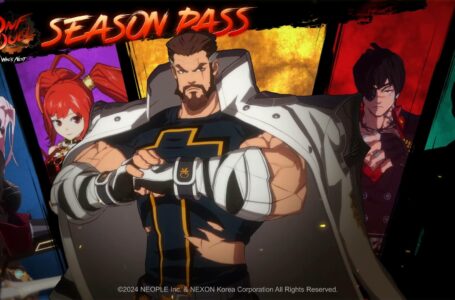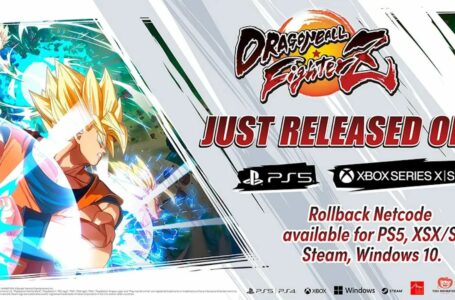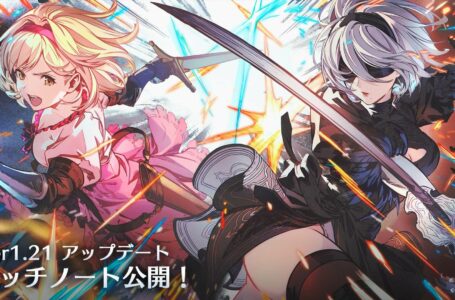The History of Kunio-kun: Nekketsu Fighting Legend
The Kunio-kun series, as we’ve seen, hasn’t been afraid to explore a variety of different gameplay styles. Indeed, it’s quite amusing to note that the Double Dragon and Kunio-kun Retro Brawler Bundle from Arc System Works probably contains more games that aren’t beat ’em ups than ones which are. But, as the name suggests, Nekketsu Fighting Legend sees Kunio getting back to what he does best: punching people in the face.
First released in 1992 as a response to the explosive growth in popularity of fighting games around the period — Street Fighter II first appeared in 1991 — Nekketsu Fighting Legend was an attempt to combine several elements: the development staff’s love of professional wrestling and its sense of drama; the highly competitive nature of the modern fighting game; and the distinctive graphical style of the previous Kunio-kun games. And it’s largely successful at what it does.
Interestingly, this is a Kunio-kun game where, in the main single- or two-player story mode, you don’t actually play as Kunio; instead, you play as “yourself”, with your initial stats and abilities determined by a combination of the name, birthday and blood type you enter upon starting a new game. You can, however, play with Kunio as your partner — though you’re under no obligation to. But more on that in a moment.
Nekketsu Fighting Legend is a game where you, Kunio, Riki and a number of other characters from the setting have been challenged to participate in a martial arts tournament by the mysterious Saber Tiger association. In the story mode, your aim is to survive 19 two-on-two battles in total, winning at least 15 of them in order to battle the Double Tiger brothers as the “final boss” of the game. Alternatively, you can play in Battle mode, which is a four-player free-for-all fight.
The basic mechanics of Nekketsu Fighting Legend will be familiar to anyone who has played previous Kunio-kun beat ’em ups. You have two attack buttons — one punch, one kick — and pressing both buttons together causes you to jump. Rather than being a straight 2D fighting game, Nekketsu Fighting Legend makes use of the 2.5D convention of most beat ’em ups, allowing you to go “into” and “out of” the screen as well as moving left and right.
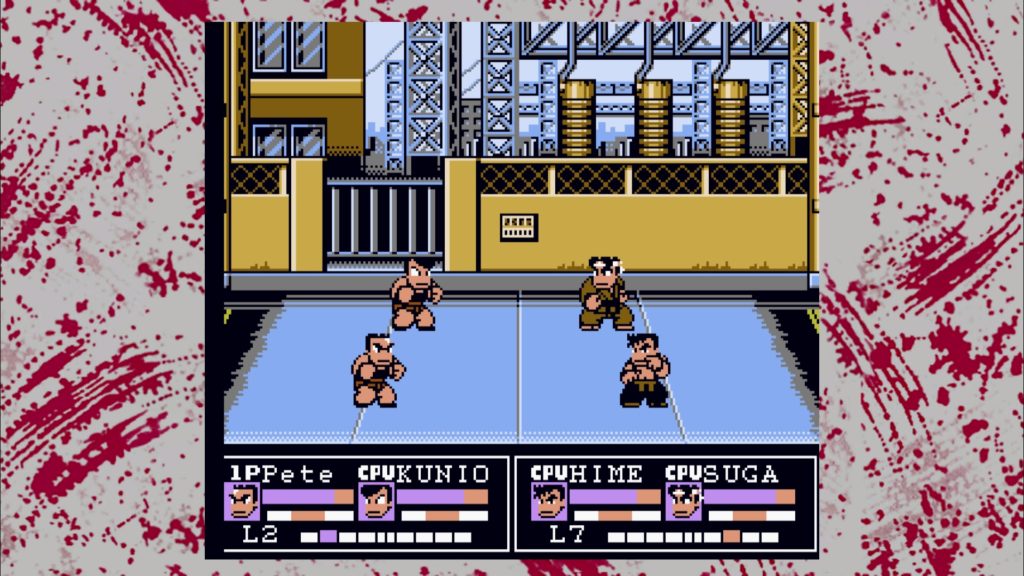
In the Story mode, there’s an interesting additional mechanic in the form of a teamwork gauge. The better you and your partner fight together, the higher this rises; consequently, if you successfully manage to perform a team combo attack, it will do more damage if the teamwork gauge is higher. As you might expect, though, doing things that are not good teamwork — like accidentally lamping your partner right in the chops while attacking an enemy a bit overenthusiastically — will cause the meter to decline.
Yes, “friendly fire” is well and truly enabled in Nekketsu Fighting Legend, and consequently you can’t just button-mash your way to victory, as having your partner on hand to support you is very helpful. While they tend not to be able to win a battle by themselves if you happen to get knocked out first, the simple fact that they divide your enemies’ attention can be enormously helpful — plus those teamwork combo attacks, while tricky to trigger, can do enormous damage.
Besides simply emptying your opponents’ health bars, Nekketsu Fighting Legend offers five alternative “rulesets” which can be applied to your matches. In Story mode, you pick one of these at the start of a new game, and the rule remains in effect for the duration, or until you pick up a special item from a defeated opponent that causes the rules to change.
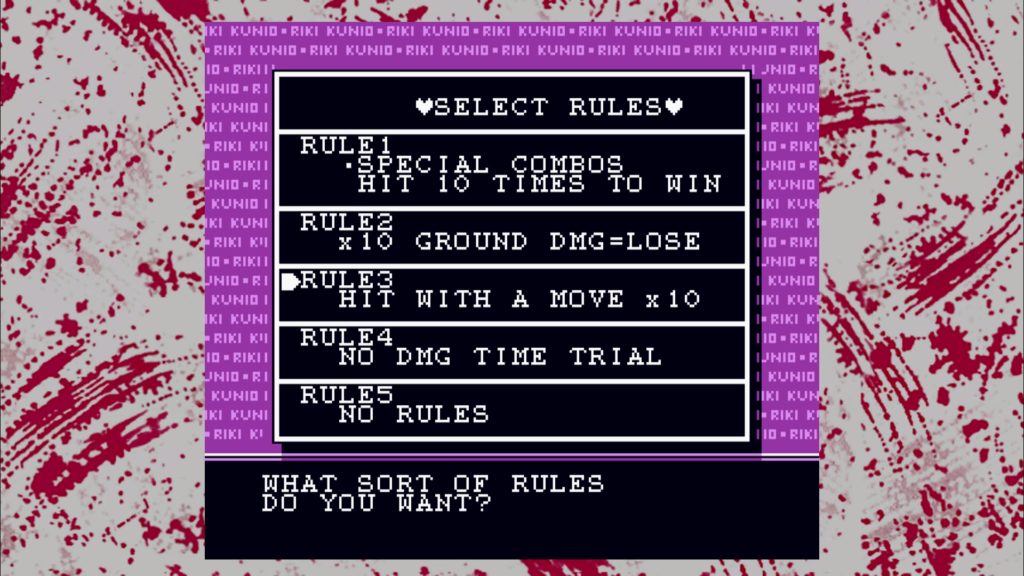
These rules — aside from the fifth one, which simply states “no extra rules” — allow you to win matches in alternative ways, including landing special combos, inflicting terrain or “down” damage on opponents, successfully landing special techniques or simply not taking any damage for a certain amount of time. While many matches often degenerate into a bit of a slugfest, the addition of these rules provide the potential to play the game in markedly different ways.
As you progress through the game, both your character and your chosen partner will level up, improving their stats and becoming more powerful. You and your partner’s stats have a password assigned to them at all times, so that when you’re playing the Battle mode you can import your custom characters and partners and pit them against one another. This is a nice touch, if a little cumbersome — and ripe for abuse if playing against the unwary!
Where the game really shines is in its variety of stages. Rather than being simple non-interactive backgrounds like in most fighting games, Nekketsu Fighting Legend’s arenas all look like they’ve come straight out of Downtown Nekketsu Story or the Famicom versions of Double Dragon. To that end, they all have interesting gimmicks to deal with — be it flowing water, slopes, pits of spikes, electric fences or landmines embedded in the floor. Making good use of the arena as well as your moves therefore becomes an important part of gameplay — and is where the game’s influences from professional wrestling are most apparent.
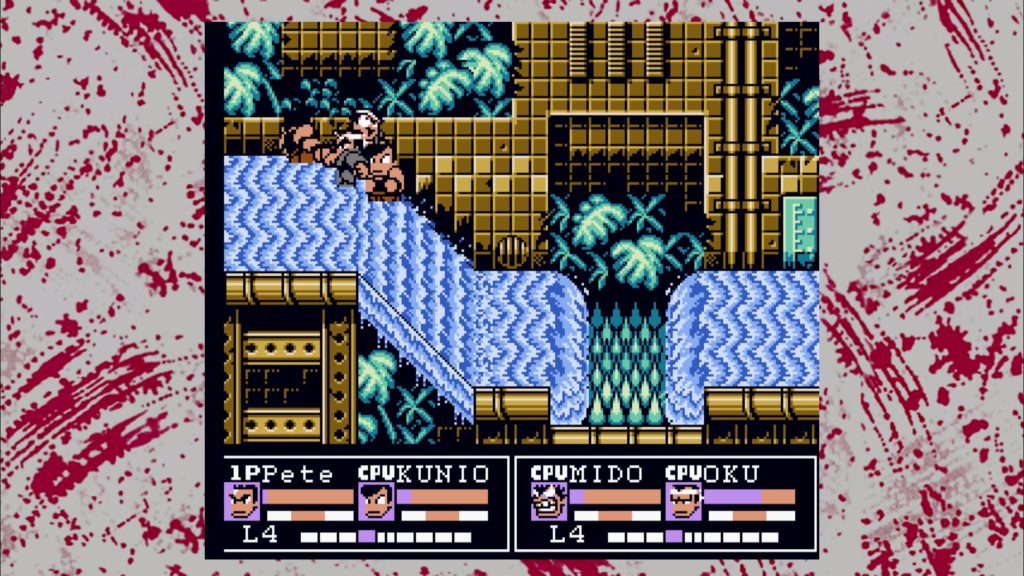
While the Famicom isn’t particularly known or well-regarded for its lineup of fighting games — it was really the 16-bit console era where it really started to shine — Nekketsu Fighting Legend is an example of how an 8-bit fighting game can work well. It doesn’t overcomplicate things, it makes use of mechanics and conventions that will be familiar to those who grew up with the beat ’em up genre, and, like the other Kunio-kun games, is absolutely packed with personality and good humour.
Top it off with a four-player mode and you have the potential for a really fun party game here on top of the significant single-player challenge. Next time you have friends over, consider giving Smash a rest for a match or two and fire up Nekketsu Fighting Legend — you might just be surprised how much fun you all end up having.
The Double Dragon and Kunio-kun Retro Brawler Bundle is available for Nintendo Switch and PlayStation 4.
Join The Discussion
Rice Digital Discord
Rice Digital Twitter
Rice Digital Facebook
Or write us a letter for the Rice Digital Friday Letters Page by clicking here!
Disclosure: Some links in this article may be affiliate links, which means we may earn a small commission if you make a purchase after clicking on them. This is at no additional cost to you and helps support Rice Digital!
- Letter from the Editor: passing the torch - June 30, 2023
- Super Woden GP 2 is looking promising - June 30, 2023
- Inti Creates is making a 32 bit-style Love Live action platformer - June 26, 2023





